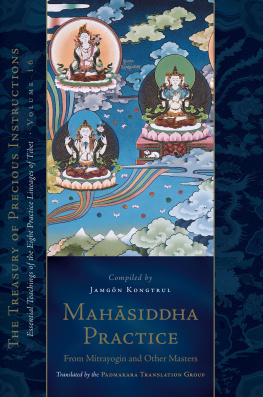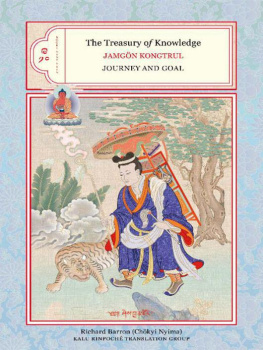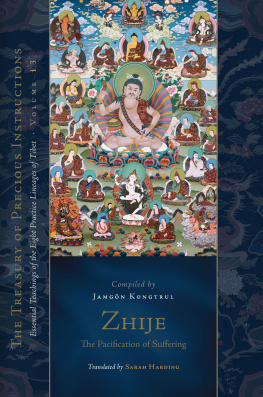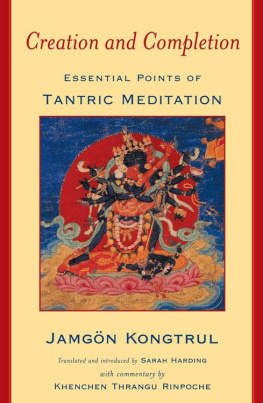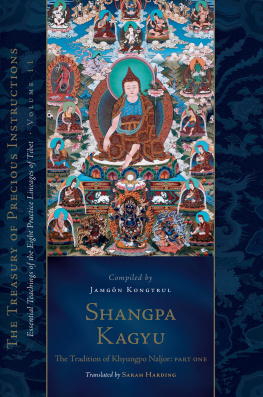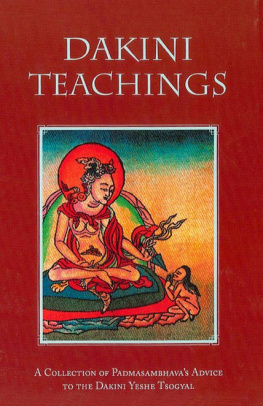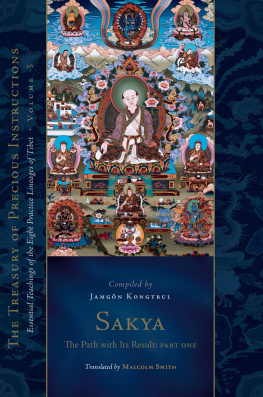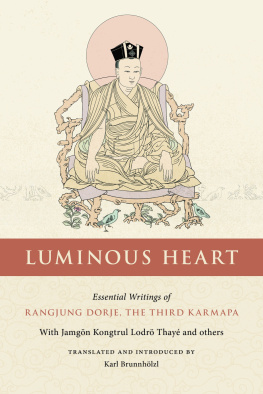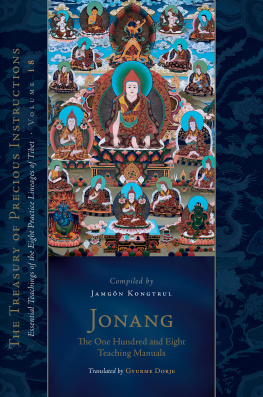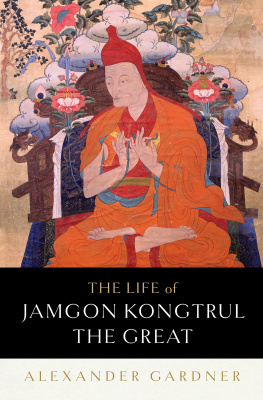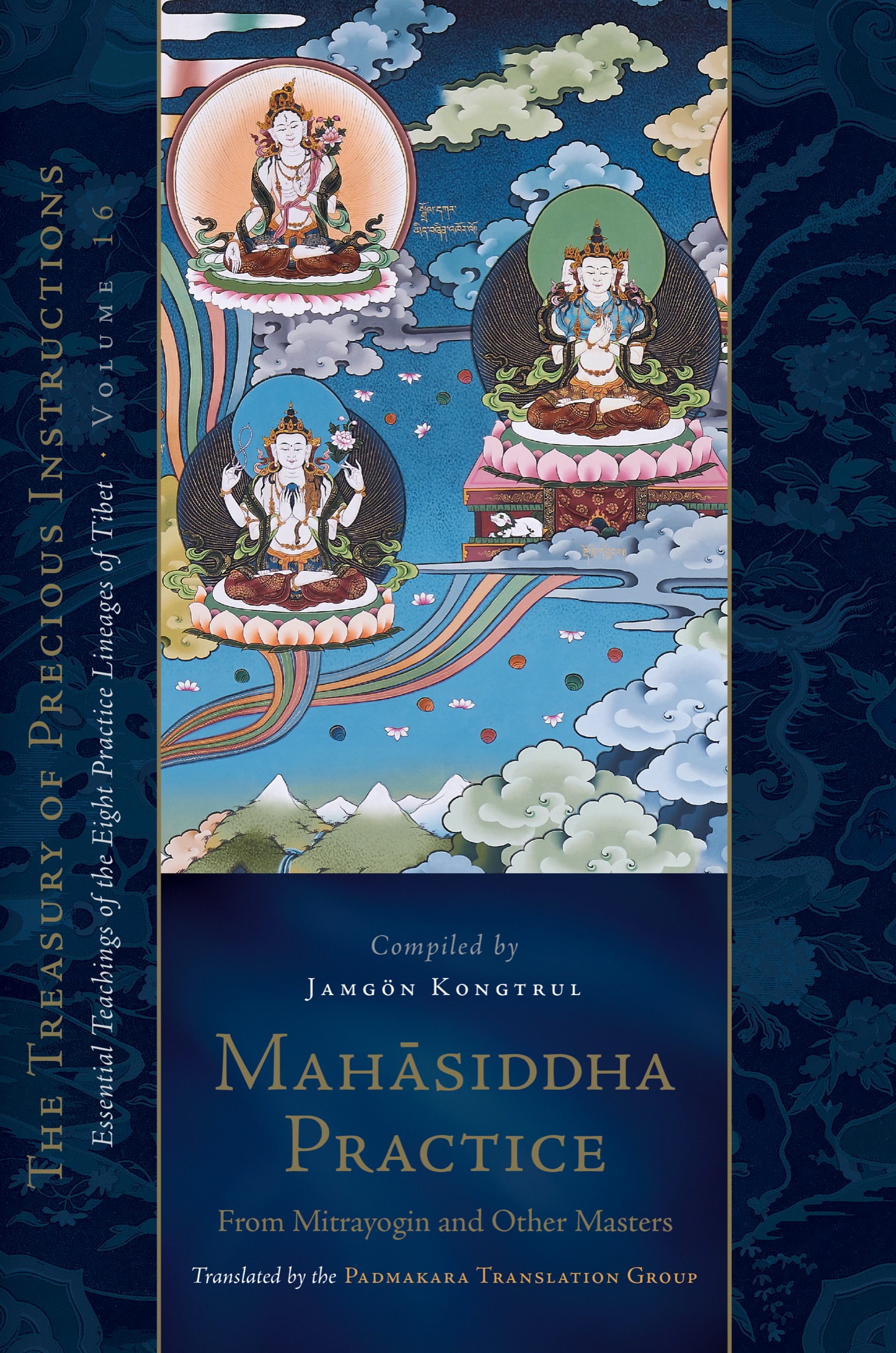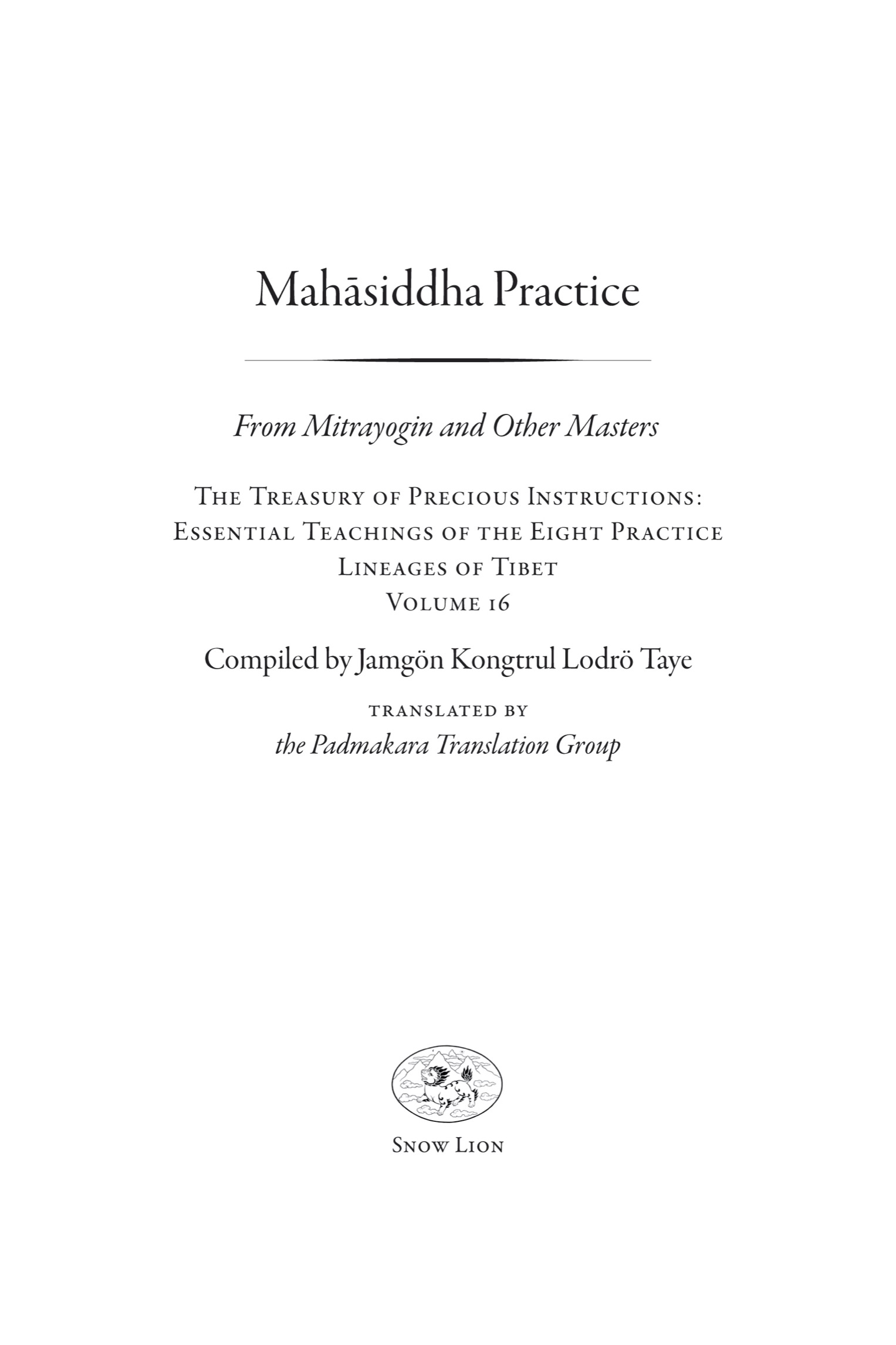Contents
Landmarks
Print Page List
T HE T SADRA F OUNDATION S ERIES
published by Snow Lion, an imprint of Shambhala Publications
Tsadra Foundation is a U.S.-based nonprofit organization that contributes to the ongoing development of wisdom and compassion in Western minds by advancing the combined study and practice of Tibetan Buddhism.
Taking its inspiration from the nineteenth-century nonsectarian Tibetan Buddhist scholar and meditation master Jamgn Kongtrul Lodr Taye, Tsadra Foundation is named after his hermitage in eastern Tibet, Tsadra Rinchen Drak. The Foundations various program areas reflect his values of excellence in both scholarship and contemplative practice, and the recognition of their mutual complementarity.
Tsadra Foundation envisions a flourishing community of Western contemplatives and scholar-practitioners who are fully trained in the traditions of Tibetan Buddhism. It is our conviction that, grounded in wisdom and compassion, these individuals will actively enrich the world through their openness and excellence.
This publication is a part of Tsadra Foundations Translation Program, which aims to make authentic and authoritative texts from the Tibetan traditions available in English. The Foundation is honored to present the work of its fellows and grantees, individuals of confirmed contemplative and intellectual integrity; however, their views do not necessarily reflect those of the Foundation.
Tsadra Foundation is delighted to collaborate with Shambhala Publications in making these important texts available in the English language.
Snow Lion
An imprint of Shambhala Publications, Inc.
2129 13th Street
Boulder, Colorado 80302
www.shambhala.com
2021 by Tsadra Foundation
Cover art: Detail from thangka The Kadampa Practice Lineage of Tibetan Buddhism. Collection Eric Colombel. Photo: Rafael Ortet, 2018. Eric Colombel, New York.
All rights reserved. No part of this book may be reproduced in any form or by any means, electronic or mechanical, including photocopying, recording, or by any information storage and retrieval system, without permission in writing from the publisher.
L IBRARY OF C ONGRESS C ATALOGING - IN -P UBLICATION D ATA
Names: Kong-sprul Blo-gros-mtha-yas, 18131899, author. | Comite? de traduction Padmakara, translator.
Title: Mahsiddha practice: from Mitrayogin and other masters. Volume 16 / compiled by Jamgon Kongtrul Lodr? Taye; translated by Padmakara Translation Group.
Description: Boulder: Shambhala, 2021. | Series: The Treasury of Precious Instructions:
Essential Teachings of the Eight Practice Lineages of Tibet; volume 16 | Includes bibliographical references and index.
Identifiers: LCCN 2020033958 | ISBN 9781611808933 (hardback)
eISBN 9780834843974
Subjects: LCSH : Spiritual lifeTantric Buddhism. | Tantric Buddhism
Tibet RegionDoctrines. | Tantric BuddhismIndiaDoctrines. | MitrayogiTeachings. | Siddhas.
Classification: LCC BQ 8939.5 . K 66 2021 | DDC 294.3/923dc23
LC record available at https://lccn.loc.gov/2020033958
a_prh_5.8.0_c0_r0
Contents

F OREWORD

I N HIS VAST work The Treasury of Precious Instructions (gDams ngag rin po chei mdzod), Jamgn Kongtrul Lodr Taye, that most eminent of Tibetan Buddhist masters, collected together all the empowerments, instructions, and practices of the eight great chariots of the practice lineages. Not only that, but he himself received the complete transmissions for all the practices, accomplished them including the retreats, and preserved them in his own mind stream. He then passed on the transmissions to his own students and all who requested them.
The Treasury of Precious Instructions exemplifies how Jamgn Kongtrul Lodr Tayes whole life was dedicated to teaching and spreading the dharma, whether it be sutra or mantra, kama or terma, old or new translation school, free of sectarian bias. Without his supreme efforts, many traditions of Tibetan Buddhism would have been lost.
The teachings of the Buddha have now spread throughout the Western world, and there is a growing need for major texts to be translated into English so that Western dharma students and scholars have access to these essential teachings. I was, therefore, delighted to hear that having successfully published a translation in ten volumes of Jamgn Kongtrul Lodr Tayes Treasury of Knowledge (Shes bya kun khyab mdzod), the Tsadra Foundation has embarked on a second major project, the translation of The Treasury of Precious Instructions, and I would like to express my gratitude to them.
May their work be of benefit to countless sentient beings.
His Holiness the Seventeenth Karmapa, Ogyen Trinley Dorje
Bodhgaya
February 21, 2016
S ERIES I NTRODUCTION

T HE T REASURY of Precious Instructions (gDams ngag rin po chei mdzod) is the fourth of the five great treasuries compiled or composed by Jamgn Kongtrul Lodr Taye (18131900), also known as Karma Ngawang Ynten Gyatso, among many other names. Kongtrul was one of the greatest Buddhist masters of Tibet. His accomplishments were so vast and varied that it is impossible to do them justice here. The reader is referred to an excellent short biography in the introduction to the first translated volume of another of his great works, The Treasury of Knowledge, or the lengthy Autobiography of Jamgn Kongtrul. Even if his achievements had consisted solely of his literary output represented in these five treasuries, it would be difficult to comprehend his level of scholarship.
Unlike The Treasury of Knowledge, which is Kongtruls own composition, his other four treasuries may be considered anthologies. Kongtruls stated mission was to collect and preserve without bias the teachings and practices of all the lineages of Tibetan Buddhism, particularly those that were in danger of disappearing. The English publication of The Treasury of Knowledge in ten volumes and the forthcoming translations of this Treasury of Precious Instructions in some eighteen volumes can attest to the success of his endeavor, perhaps even beyond what he had imagined.
The Treasury of Precious Instructions is, in some ways, the epitome of Kongtruls intention. He first conceived of the project around 1870, as always in close consultation with his spiritual friend and mentor Jamyang Khyentse Wangpo (18201892). The two of them, along with other great masters, such as Chokgyur Dechen Lingpa, Mipam Gyatso, and Ponlop Loter Wangpo, were active in an eclectic trend in which the preservation of the texts of Tibetan Buddhism was paramount. It was with Khyentses encouragement and collaboration that Kongtrul had created

